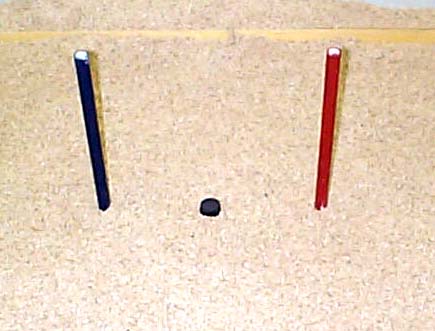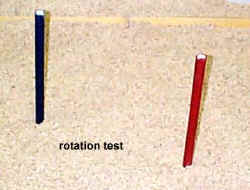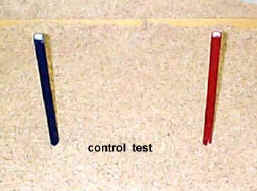Cheng
& Spetch
Homepage
Next Section:
Geometric
module
__________
|
I. The
Transformational Approach
The transformational
approach is one powerful method for finding out
what an animal has learned in a task (Cheng, 1995; Cheng & Spetch,
1998). This approach is illustrated in a number of sections of this chapter.
The animal is first trained to find one location in one stimulus setup. After learning, occasional unrewarded tests are given in which the
setup might be transformed in various ways (e.g., a landmark might be shifted,
rotated, removed, or the array might be expanded). How the animal performs under
these transformations tells us a great deal
about what it has learned. Below is an example of this approach. Below is an
example of this approach.
|
Training Phase |
|

|
Training Phase: The animal is trained to find a reward between two differently colored
landmarks . The location of the reward is indicated by the black disk in the photo
|
|
|
Transformation Test Phase
|
|

|

|
Transformation Test: After it has learned the
above task, where will it search when the array
is rotated by a small amount? Performance on this test is compared to results of
similarly unrewarded control
tests in which the training setup is presented. The results of this type of test can tell us something about the directional
cues that an animal uses.
|
|
Next Section: Geometric module
|

